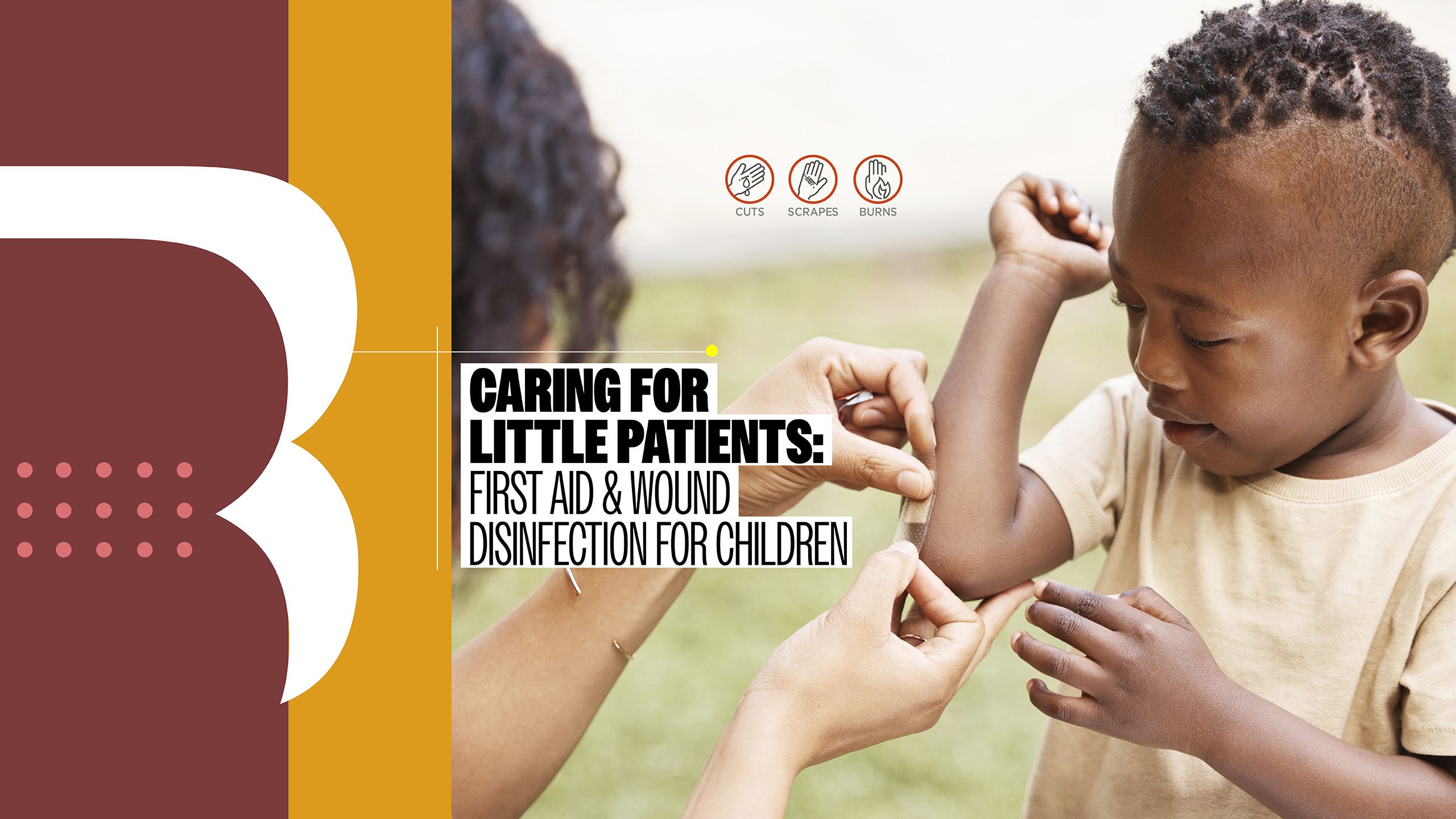
First aid plays a crucial role in the initial management of burns, wounds, and cuts, particularly in children who are at higher risk of infection due to their developing immune systems.
As a pharmacist, understanding preventive care in wound infections and effective disinfection strategies is key to ensuring optimal wound healing outcomes. This article outlines practical first aid practices with a focus on disinfection, specifically the role of povidone iodine, based on evidence-based recommendations and reputable studies.

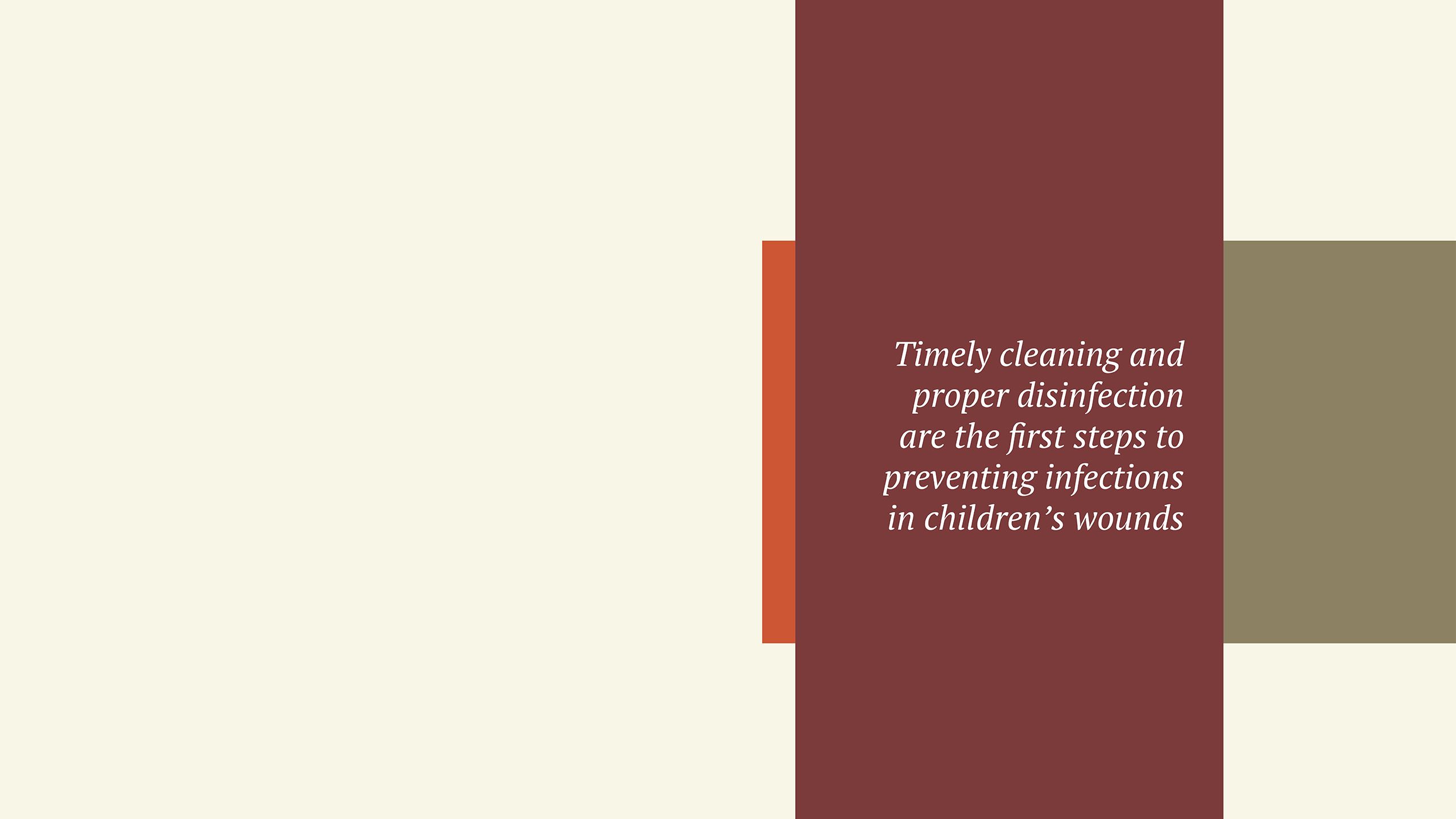
THE PHARMACISTS' ROLE IN WOUND CARE
Pharmacists are often the first point of contact for caregivers seeking advice on managing minor injuries in children. An essential part of offering appropriate first-aid recommendations involves assessing the wound type, minimising risk of infection, and guiding the correct selection of disinfectants. The objectives of wound disinfection include:
- Prevention of infection: Eliminating pathogenic microorganisms within the wound.1,2
- Facilitating healing: Ensuring bacterial control to minimise inflammation and complications.3,4,5
- Safety considerations in children: Recommending non-toxic agents with reduced risk of skin irritation or other adverse reactions.2,6,7
BEST PRACTICES FOR FIRST AID WOUND CARE
1. Initial cleaning: Clean wounds gently using saline solution or clean, lukewarm water to remove debris. This minimises trauma to tissue and helps prevent infection development.8
2. Evaluating antiseptics: Selection of an appropriate antiseptic is crucial. Desirable antiseptics for paediatric wounds should have broad antimicrobial coverage, promote healing, and meet high safety standards.9 Common antiseptics include:
- Povidone Iodine
- Chlorhexidine
- Hydrogen Peroxide
3. Application of antibacterial ointments: After cleaning and drying, apply a thin layer of antiseptic ointment or cream.10
4. Wound dressings: Protecting the wound with sterile dressings promotes healing and reduces contamination risk. 11
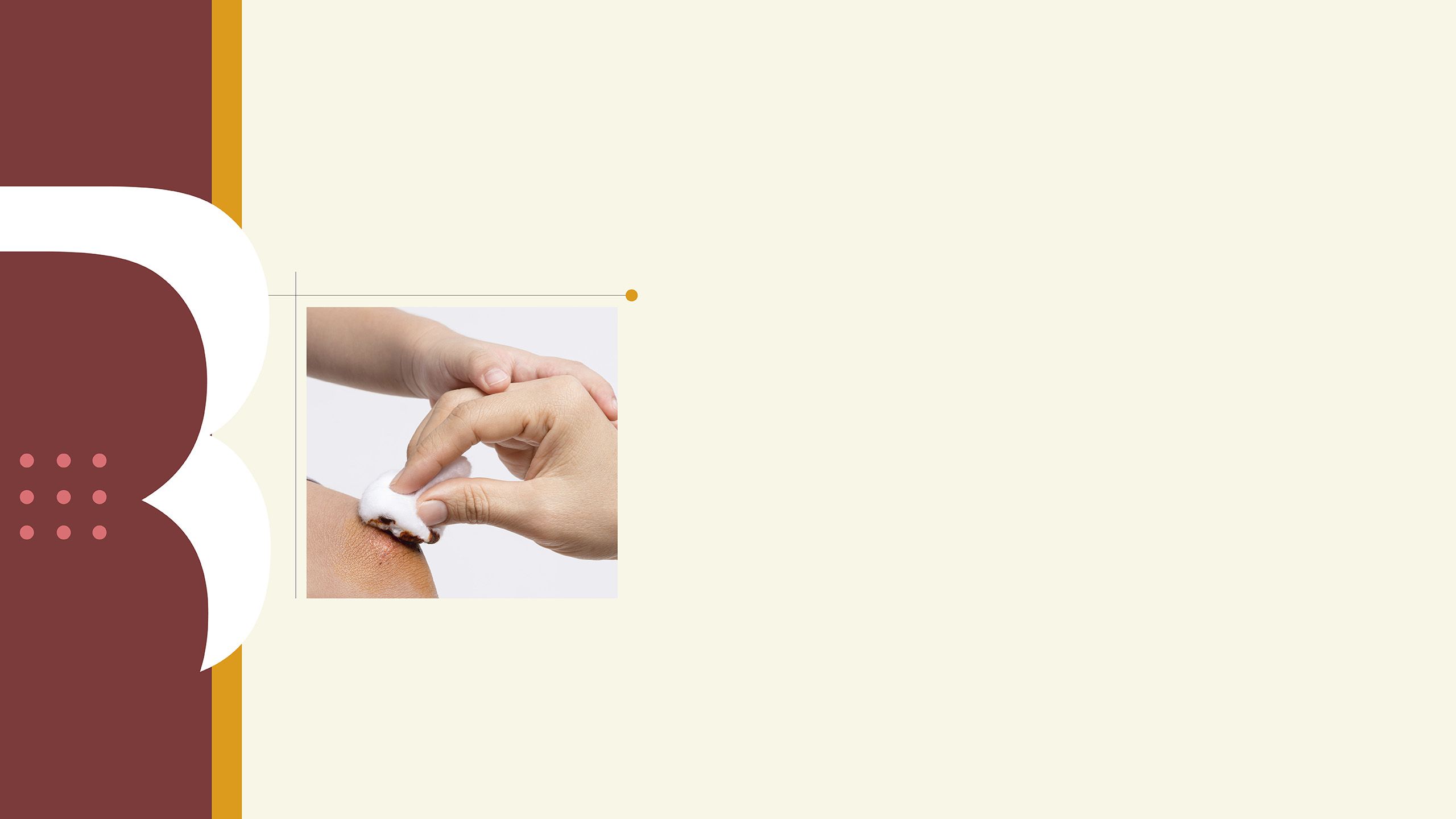
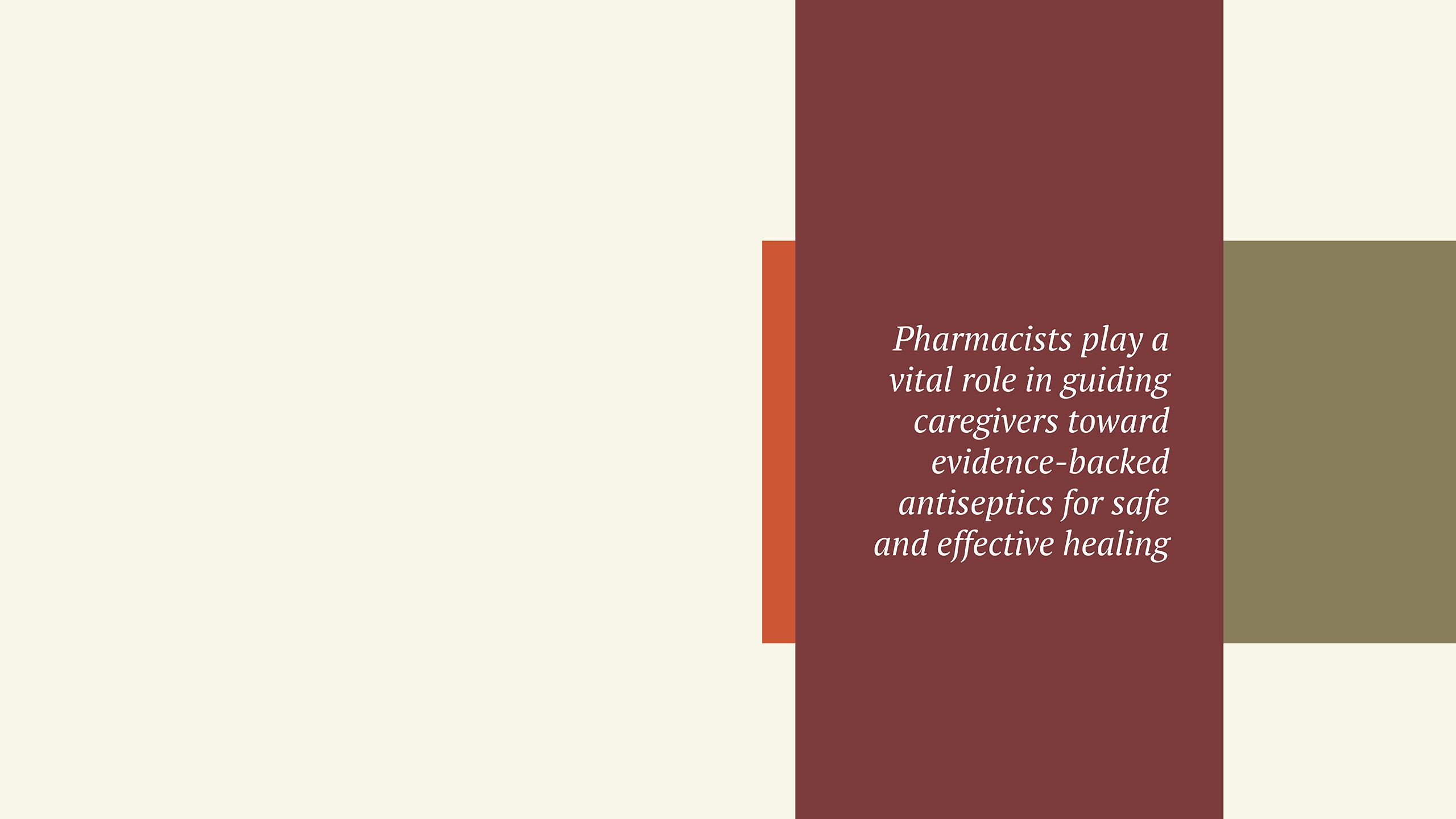
BENEFITS OF POVIDONE IODINE IN WOUND CARE
Povidone iodine has gained recognition as a gold-standard antiseptic for wound care, and its effectiveness and safety have been reaffirmed in recent studies. Key advantages include:
- Broad antimicrobial spectrum: It acts against Gram-positive and Gram-negative bacteria, fungi, protozoa, spores, and a wide range of viruses.12
- Sustained activity: Active against pathogens for up to 12–14 hours post-application.12
- Low resistance development: Unlike chlorhexidine and triclosan, bacteria are less likely to develop resistance to povidone iodine.12
- Skin compatibility: Its tissue tolerability ensures minimal irritation, making it suitable for most children except neonates (<1 month).12
- Multiple formulas: Available in creams, aqueous solutions, and gels to suit various wound types.12
SPECIAL CONSIDERATIONS FOR PAEDIATRIC USE OF POVIDONE IODINE
- Safety profile in children: Usage is deemed safe for minor burns, wounds, and superficial cuts in children above one month of age. Due to absorption risks and possible thyroid suppression, povidone iodine is contraindicated in neonates.12
- Adverse reactions: Rare allergic contact dermatitis or skin sensitivity may occur. Pharmacists must advise caregivers to monitor for any reaction post-use.12
- Instructions for safe use: Highlight proper application techniques to caregivers, such as avoiding overuse and replacing dressings promptly.12
COMPARING POVIDONE IODINE TO OTHER ANTISEPTICS
In comparison to other disinfectants, povidone iodine demonstrates superior breadth of action and tissue safety. Chlorhexidine, while effective in reducing bacterial counts, has limited action against certain organisms and poses a higher risk of allergic reactions. Similarly, alcohol-based solutions may be effective but contribute to drying and irritation in paediatric skin. Therefore, povidone iodine offers a balanced profile between efficacy and safety for paediatric first aid.12
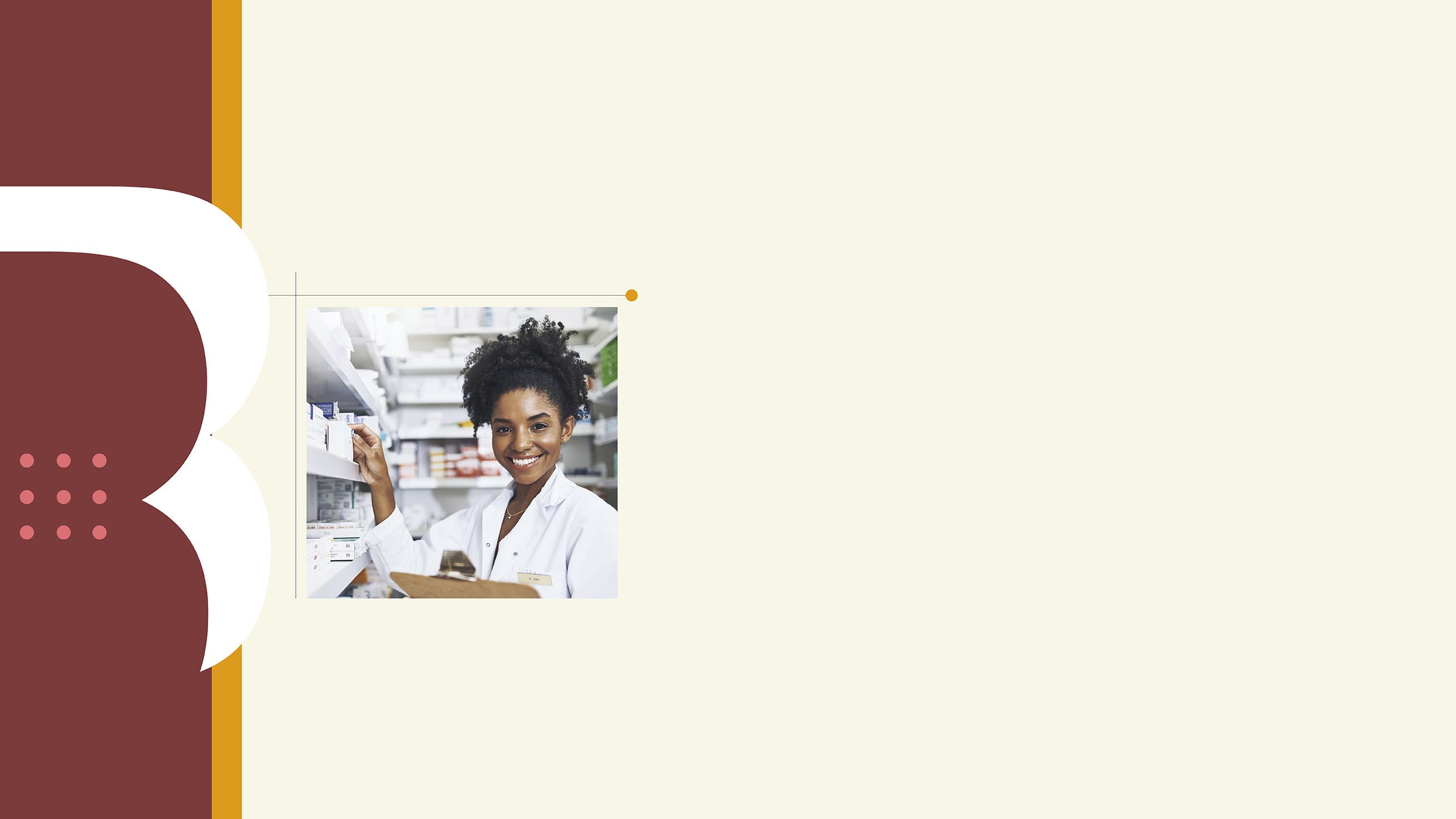
PRACTICAL COUNSELLING TIPS FOR PHARMACISTS
Pharmacists should emphasise the following to caregivers:
- Early intervention: Timely cleaning and disinfecting reduce infection risks.11
- Choosing effective antiseptics: Educating on the benefits of povidone iodine and cautioning against products with less evidence of efficacy.12
- Signs of infection: Highlight changes like redness, warmth, pus formation, and prolonged healing which could indicate complications.10
First aid measures in paediatric wound management revolve around efficient disinfection to prevent infections and aid recovery. The inclusion of povidone iodine as a safe and effective antiseptic underscores the pharmacist's role in guiding evidence-backed wound care practices. Reinforcing best practices in first aid helps pharmacists optimise the care pathway for children with minor injuries.
REFERENCES
- Salvador K, Wagner M. Wound Care & Infection: Nursing Diagnoses, Care Plans, Assessment & Interventions. NurseTogether, February 2025. Available from: https://www.nursetogether.com/wound-care-infection-nursing-diagnosis-care-plan/. Accessed July 2025.
- International Wound Infection Institute. Therapeutic wound and skin cleansing: Clinical evidence and recommendations. Wounds International, 2025. Available from: https://woundsinternational.com/wp-content/uploads/2025/03/IWII_2025_Wound-cleansing-web-2.pdf. Accessed July 2025.
- Daeschlein G. Antimicrobial and antiseptic strategies in wound management. Int Wound J, December 2013. Available from: https://pmc.ncbi.nlm.nih.gov/articles/PMC7950476/. Accessed July 2025.
- Walcott R, Fletcher J. The role of wound cleansing in the management of wounds. Wounds International, 2014. Available from: https://woundsinternational.com/wp-content/uploads/2023/02/randall.pdf. Accessed July 2025.
- Britto EJ, Nezwek TA, Popowicz P, et al. Wound Dressings. [Updated 2024 Jan 23]. In: StatPearls [Internet]. Treasure Island (FL): StatPearls Publishing, 2025. Available from: https://www.ncbi.nlm.nih.gov/books/NBK470199/. Accessed July 2025.
- Drosou A, Falabella A, Kirsner RS. Antiseptics on Wounds: An Area of Controversy (PART ONE). Wounds. Available from: https://www.hmpgloballearningnetwork.com/site/wounds/article/1585. Accessed July 2025.
- Clinical Excellence Commission. UPDATED: Disruption to supply of multiple antiseptic products. NSW Ministry of Health, 2025. Available from: https://www.health.nsw.gov.au/sabs/Documents/2025-sn-011.pdf. Accessed July 2025.
- Schneider M. Wound assessment and management. The Royal Children's Hospital Melbourne, 2023. Available from: https://www.rch.org.au/rchcpg/hospital_clinical_guideline_index/Wound_assessment_and_management/. Accessed July 2025.
- International Wound Infection Institute. Use of wound antiseptics in practice. Wounds International, 2023. Available from: https://woundsinternational.com/wp-content/uploads/2023/10/MULTI23_CD_Antiseptic_WINT_WEB-v3-1.pdf. Accessed July 2025.
- Schmitt Pediatric Guidelines LLC. Wound Infection. Seattle Children’s Hospital. May 2025. Available from: https://www.seattlechildrens.org/conditions/a-z/wound-infection/. Accessed July 2025.
- Levy G. Topical Wound Debridement in Pediatric Patients. Children’s Hospital of Orange County (CHOC),2023. Available from: https://choc.org/wp-content/uploads/2023/11/Topical-Wound-Debridement-in-Pediatric-Patients-2023.pdf. Accessed July 2025.
- Lachapelle JM, Castel O, Casado AF, et al. Antiseptics in the era of bacterial resistance: a focus on povidone iodine. Clin Pract, 2013. Available from: https://www.openaccessjournals.com/articles/antiseptics-in-the-era-of-bacterial-resistance-a-focus-on-povidone-iodine.pdf. Accessed July 2025.
Images supplied by: Getty Images



